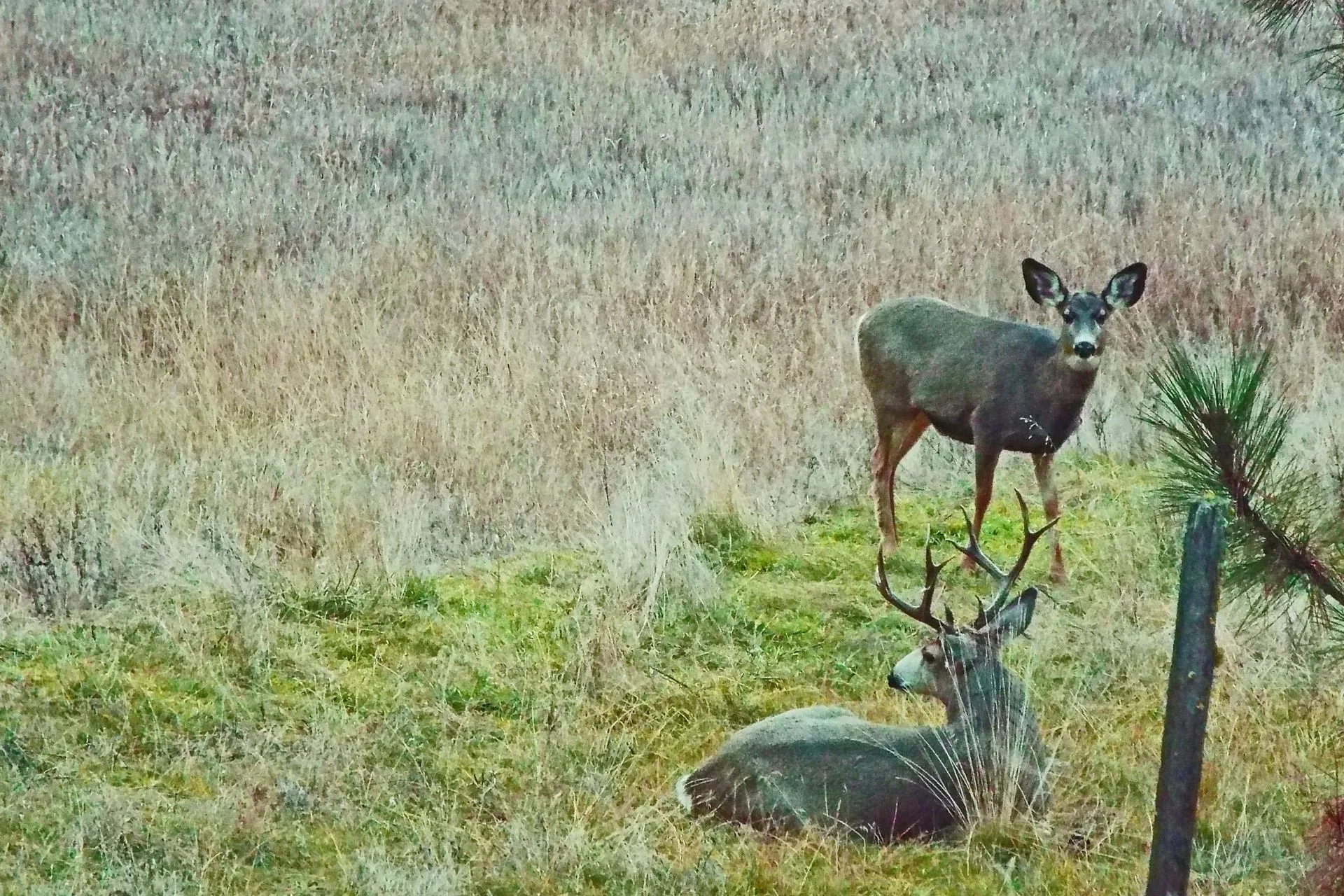By BRETT FRENCH | french@billingsgazette.com
There are several places to lay blame for the mule deer population decline in south-central and Eastern Montana: disease, weather extremes, loss of habitat, predators and nonresident hunters are some of the popular themes.
Region 7, in southeast Montana, has seen the biggest drop, a 37% decline in the long-term average. Region 5 in south-central Montana comes in second with a 26% drop, followed closely by Region 6 in northeastern Montana at minus 24%.
Statewide, in the last 10 years, mule deer population estimates have fallen 19%.
“In parts of the state, especially eastern Montana, there’s a lot of concern over mule deer,” said FWP Director Christy Clark. “We recognize our great state’s wildlife are the public’s resources, and we need to manage them for present and future generations.”
The department also created a citizen’s advisory committee last year to help guide FWP’s discussions. An ad-hoc group submitted its ideas to the agency last year, as well.
Public meetings held
How to stall the fall is a question the Montana Department of Fish, Wildlife & Parks is attempting to figure out as it drafts a new management plan for the species. To help out, the agency held public meetings across the state. Nearly 150 people attended.
“It’s important for people to know they are being heard when they voice their frustrations with the mule deer populations and how we’ve seen significant decline,” said Quentin Kujala, FWP chief of conservation policy. “People were very willing to participate in these interactive meetings and provide invaluable feedback for us to implement in our new plan.”
Nonresidents targeted
One of the common refrains across the state was to reduce nonresident hunting in some fashion. One suggestion was to have out-of-staters have to pick a week, season or region to hunt. Another would reduce nonresident licenses in each hunting district or place a cap on the number of nonresidents by hunting region or district. The most restrictive proposal was to cut nonresident mule deer licenses by 50%.
“Discussion on harvest management focused primarily on the increase in nonresident hunters, as well as what steps could be taken to increase mule deer populations when they are low,” said Brett Dorak, Region 7 wildlife manager in Miles City. “The public wants to see us increase populations by reducing antlerless harvest on all land ownerships, which is part of our strategy.”
Last season, more than 27,700 nonresidents spent an estimated 178,900 days in pursuit of deer – about six days per hunter, according to FWP’s annual statistics. In comparison, in 2014 more than 25,100 nonresidents hunted deer.
“The main takeaways were reducing hunter crowding and providing better opportunity for Montana residents,” said Scott Thompson, FWP Region 6 wildlife manager in Glasgow.
In 2014, those hunters killed more than 9,800 mule deer compared to 2024 when nonresidents shot 11,370. Doing the math, that means about 2,600 more nonresident hunters accounted for an increase in the mule deer harvest of about 1,570 animals.
On a statewide scale, that doesn’t seem like a lot. Especially when considering the number of resident mule deer hunters. In 2024, more than 120,000 resident hunters shot 27,700 mule deer, averaging eight days pursuing the species.
Ten years ago, 119,500 residents accounted for a harvest of about 24,700 muleys. So, even though Montana deer hunter numbers jumped by only 500, resident hunters have increased their harvest by 3,000 animals.
Residents could also feel pain
Montana’s rifle season extends across five weeks, starting in late October and going through the weekend after Thanksgiving. This overlaps the deer mating season, known as the rut, when bucks are more vulnerable as they roam in pursuit of does.
Several other recommendations from the public hearings would target resident hunters. They include mandatory harvest reporting, requiring hunters to choose a specific hunting district or region and cutting the length of the general season.
One recommendation was very specific: “We should have a two-week general season for mule deer with permit only for the last three weeks or white-tailed deer only.”
“Many attendees made suggestions, such as stricter permit requirements and limiting hunting during the rut, to reduce their opportunities today to ensure the longevity of this iconic Montana species into the future,” said Matt Ladd, Region 5 wildlife manager in Billings.
The Fish and Wildlife Commission has already agreed to halt all mule deer doe hunting on public land in Eastern Montana.
Following the 2022 season, the agency also surveyed resident and nonresident mule deer hunters to help bolster its understanding of what hunters want. A majority, more than 60%, said they prefer less restrictive mule deer hunting regulations.
A whopping 85% said they favorably rate mule deer hunting opportunities in Montana, which would seem to be a vote for not making regulations more restrictive, as some hunters have proposed.
Predator and disease concerns
Other ideas tossed out at the public meetings were aimed at the science side of mule deer management, such as research on migration and mortality and acquiring a better understanding of important mule deer winter ranges.
All of the hearings also raised concerns about the impacts of coyotes, bears, wolves and cougars on mule deer numbers, with calls for the killing of more of these predators.
The biggest threat to mule deer outside of human control is the ever-expanding spread of chronic wasting disease. The always fatal neurological infection has been detected in animals in about a third of the state’s 155 hunting districts.
In addition to spreading into new areas, the disease’s prevalence has also climbed based on testing in northeastern Montana along the Canadian border. Although the state initially hoped to keep prevalence below 5% by reducing deer numbers in areas where infections were discovered, some areas in that corner of the state are seeing infection rates as high as 34%.
“Other western states have reported deer population declines correlated with CWD prevalence surpassing 20% to 40% in a population,” Scott Hemmer, Havre-area FWP biologist, said in February.
New plan available in 2026
The new Mule Deer Management Plan, scheduled to be released at the end of 2026, will reflect public concerns FWP has heard over the past several years, as well as the latest science and research around mule deer numbers and management, the agency said.
The plan will provide more comprehensive guidance for FWP as it manages mule deer and include strategies and information on management concepts that address hunting harvest, mule deer habitat conservation and herd health.



